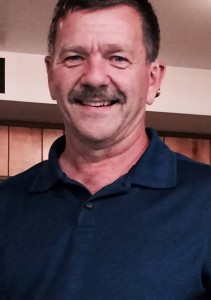Professor Edwin Bergstresser is a new faculty member at Capital University. In addition to his work in the classroom, he is also a minister at Holy Cross Lutheran Church, a husband, and the father of four boys.
Bergstresser is also deaf. Despite this, Bergstresser seeks every day to share this message with his ASL (American Sign Language) students and congregants.
“I’m new to this campus here, (and) I just want to help the students to understand about the deaf language and the culture. The only difference between the hearing and the deaf is the type of communication. We can do everything that anybody can do, just that we can’t hear,” Bergstresser said.
As a fourth-generation minster, Bergstresser has experienced a drive to achieve his calling from an early age.
“The first born son serves as a Levite in the Bible, a priest in the Temple … I feel the same way. I can’t walk away from the ministry which God called me … My dad told me that in the last three generations there are 42 ministers in my family,” Bergstresser said.
Despite growing up in an Evangelical Lutheran Church of America (ELCA) household, Bergstresser had to transition into the Missouri Synod while studying to become a minster because the ELCA lacked a program to train deaf ministers. Despite this unique program, some challenges have still presented themselves. One of these is the enduring social stigma surrounding deaf people.
“The bad perception about the deaf is because the Bible says the phrase deaf and dumb, [so] a lot of people think the deaf are dumb. However, the word dumb does not mean they don’t know anything, but dumb means we cannot speak … I have to remind myself less than 1% of the deaf population can speak like I do,” Bergstresser said.
After being ordained, Bergstresser served as a pastor at a predominately hearing congregation before moving to Holy Cross Lutheran Church, which provides spiritual support for deaf congregants.
“In the past I served in a hearing congregation and had three cultures: deaf, hard of hearing, and hearing people … I can speak and sign at the same time, (but) the hearing people know that I don’t use proper English, but a broken English to get the message across because the deaf understand better. The hard of hearing are the hardest (to minister to) because they live in two worlds,” said Bergstresser.
Helping his students understand and navigate these cultures is a major goal for Bergstresser.
“Sign language enables [the deaf] to do a lot of things. If they don’t know sign language how can they communicate with anybody? One of the reasons for the ASL class here is to help students to communicate with the deaf that are in their life. They will understand better the deaf language and culture,” Bergstresser said.
One important aspect of deaf culture in particular that Bergstresser hopes to share with students is how ways of thinking differ.
“The way the deaf person thinks and the hearing person thinks are different because the deaf use a lot of visual, they see around them … while the hearing person uses the ears a lot more than the eyes … Some have asked if the deaf should integrate with a hearing congregation or [if we should] have our own congregation. If the deaf person is a member of a hearing congregation …(he or she) may become inactive [or] apathetic because of a lack of communication. It’s better for a deaf person to become active in a ministry active in their own culture and that is why I serve in a deaf church,” Bergstresser said.
While it is important to have facilities to serve the needs of the deaf, Bergstresser stressed that these places are open to all people, and that allies are needed for the community.
“I call [allies of the deaf community] SODA [or] Servants of Deaf Adult. My sons are SODA,” Bergstresser said.
During his time at Capital, Bergstresser hopes that he can continue working to build bridges between the deaf and hearing communities, and inspire other students to work as allies for the deaf.


